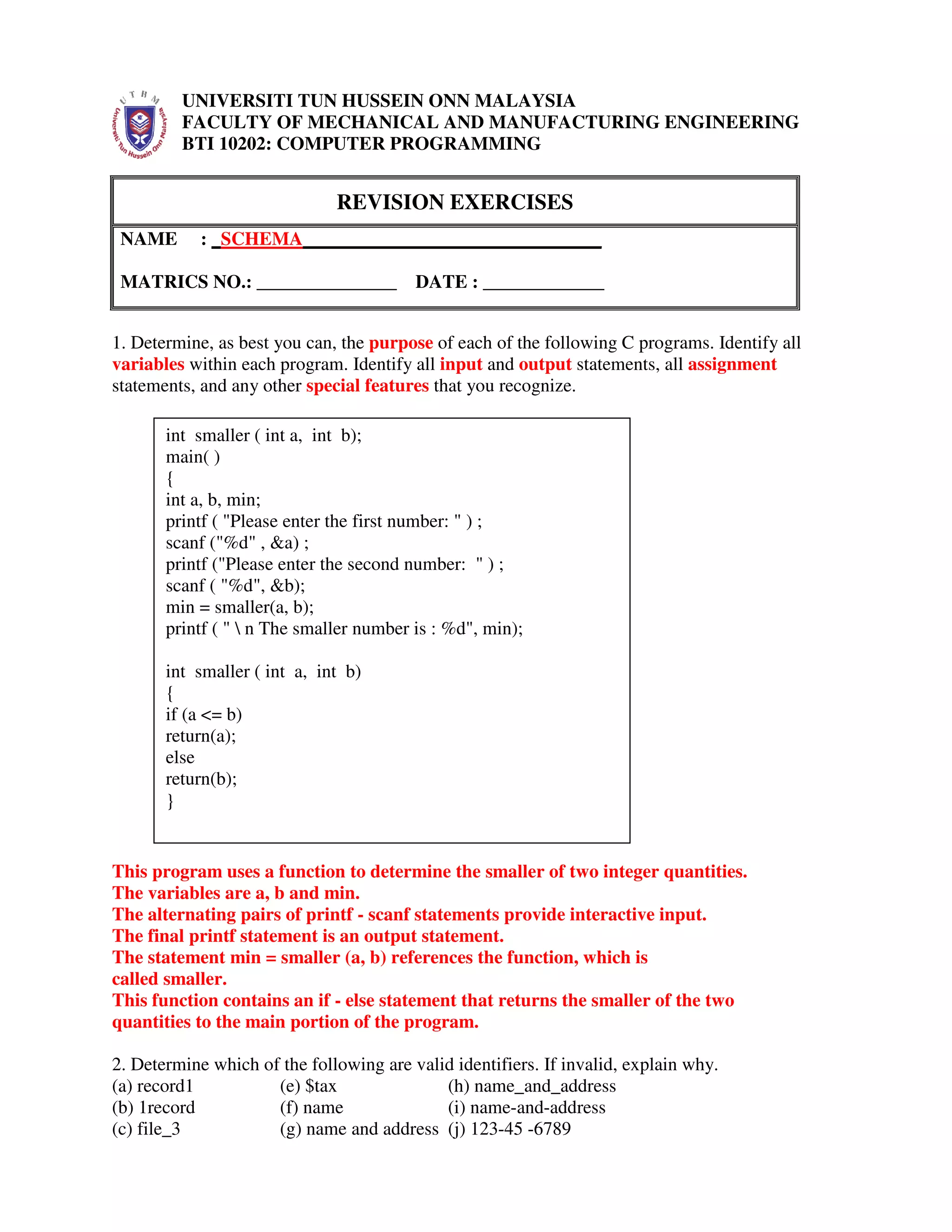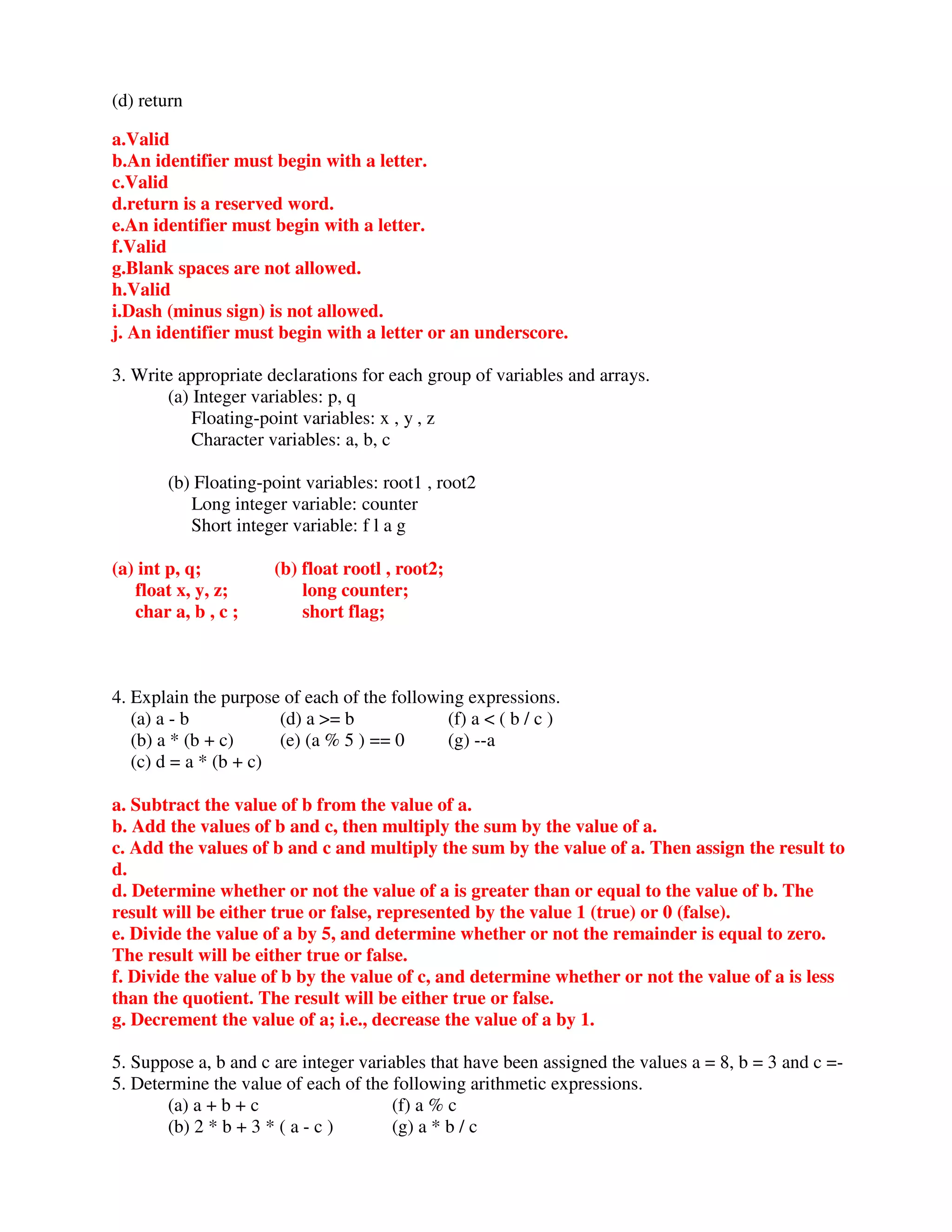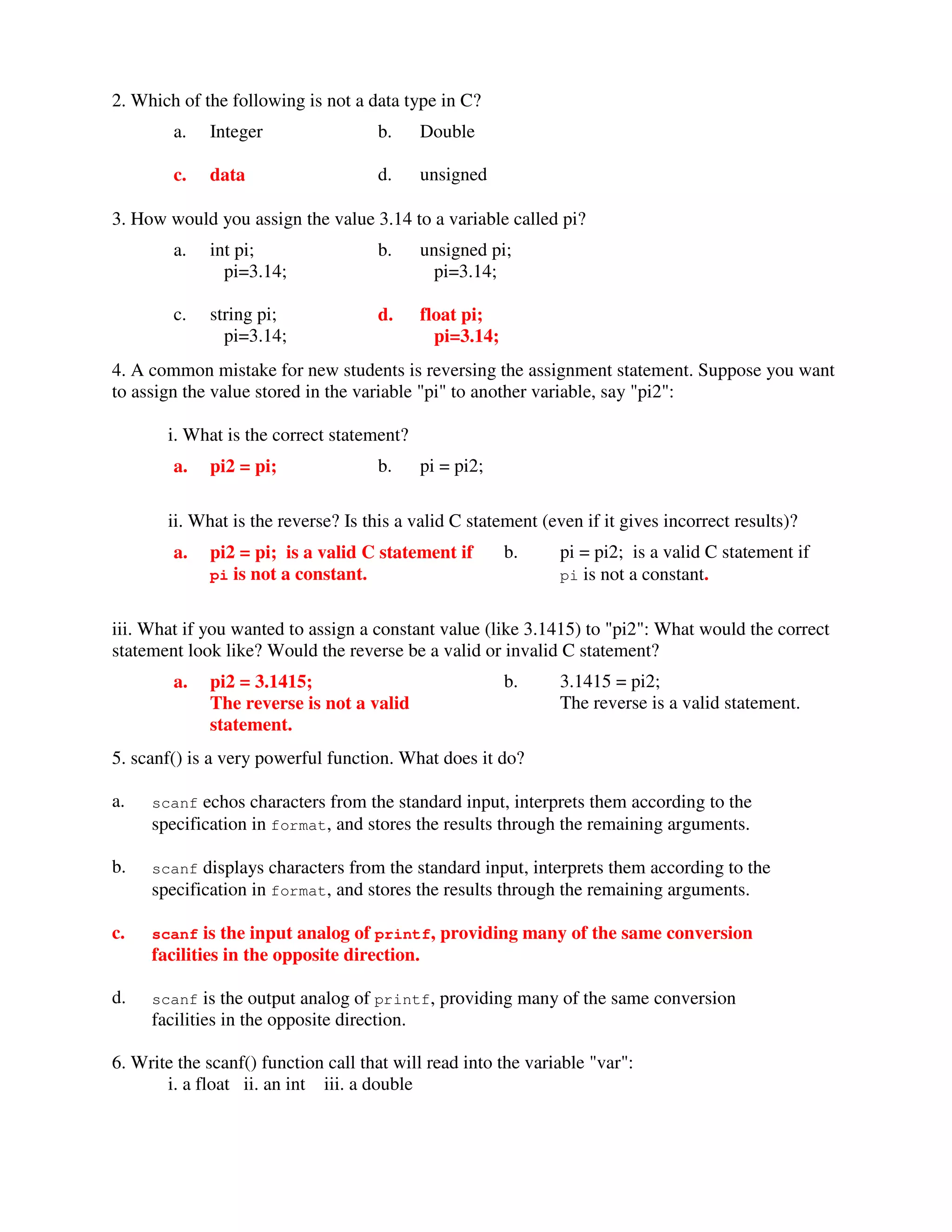This program defines floating point variables a and b and initializes them to 0.001 and 0.003 respectively. It also defines a floating point variable c and pointers pa and pb. Pa is initialized to point to a, and pb is initialized to point to b. The value of a is then doubled through pa. The question asks to complete the statement to calculate c based on the other variables.


![(c) a / b (h) a * (b / c)
(d) a % b (i) (a * c) % b
(e) a / c (j) a * (c % b)
(a) 6 (f) 3
(b) 45 (g) -4
(c) 2 (h) 0 (because b / c is zero)
(d) 2 (i) -1
(e) -1 (j) -16
6. Suppose x, y and z are floating-point variables that have been assigned the values x = 8.8, y =
3.5 and z = -5.2.
Determine the value of each of the following arithmetic expressions.
(a) x + y + z
(b) 2 * y + 3 * ( x - z )
(c) x / y
(d) x % y
(a) 7.1
(b) 49
(c) 2.51429
(d) The remainder operation is not defined for floating-point operands
7. A C program contains the following declarations and initial assignments:
int i= 8, j = 5, k;
float x = 0.005, y = -0.01, z;
char a, b, c = ' c ' , d = ‘d ' ;
Determine the value of each of the following assignment expressions. Use the values originally
assigned to the variables for each expression.
(a) k = (i + j ) (i) z = k = x
(b) z = (x + y) (j) k = z = x
(c) i = j (k) i += 2
(d) k = (x + y) (l) y -= x
(e) k = c (m) x *= 2
(f) z = i / j (n) i /= j
(g) a = b = d (o) i %= j
(h) i= j = 1.1 (p) i+= ( j - 2)
(a) k= 13 (i) k = 0, z = 0.0
(b) z = -0.005 (j) z = 0.005, k = 0 [compare with (i)
above]
(c) i=5 (k) i= 10
(d) k=0 (l) y = -0.015
(e) k = 99 (m) x = 0.010
(f) z = 1.0 (n) i=l](https://image.slidesharecdn.com/revision1schema-121203102316-phpapp01/75/Revision1schema-C-programming-3-2048.jpg)

![Write a printf function for each of the following groups of variables or expressions. Assume all
variables represent decimal integers.
(a) i, j and k
(b) (i + j), (i - k)
(c) sqrt(i + j),abs(i - k)
(a) printf (“%d %d %d”, i,j, k);
(b) printf ( "%d %d", (i+ j ) , ( i - k));
(c) printf ( "% f %d", sqrt(i + j) , abs(i - k));
12. A C program contains the following statements.
#include <stdio.h>
char text [ 80];
Write a printf function that will allow the contents of text to be displayed in the following ways.
(a) Entirely on one line.
(b) Only the first eight characters.
(c) The first eight characters, preceded by five blanks.
(d) The first eight characters, followed by five blanks.
(a) printf ( “ %s" , text ) ;
(b) printf("%.8s", text ) ;
(c) printf ( "%13.8s", text ) ;
(d) printf ( "%-13.8s”, text ) ;
13. A C program contains the following array declaration.
char text[80];
Suppose that the following string has been assigned to text.
Programming with C can be a challenging creative activity.
Show the output resulting from the following printf statements.
(a) printf ( "%s", text ) ; (d) printf ( "%18.7s", text ) ;
(b) printf ("%18s", text ) ; (e) printf ( " % -18.7s " , text ) ;
(c) printf ( “%.18s", text ) ;
(a) Programming with C can be a challenging creative activity.
(b) Programming with C can be a challenging creative activity.
(c) Programming with C
(d) Program
(e) Program
14. Write a switch statement that will examine the value of a char-type variable called color and
print one of the following messages, depending on the character assigned to color.
(a) RED, if either r or R is assigned to color,
(b) GREEN, if either g or G is assigned to color,
(c) BLUE, if either b or B is assigned to color,
(d) BLACK, if color is assigned any other character](https://image.slidesharecdn.com/revision1schema-121203102316-phpapp01/75/Revision1schema-C-programming-5-2048.jpg)









